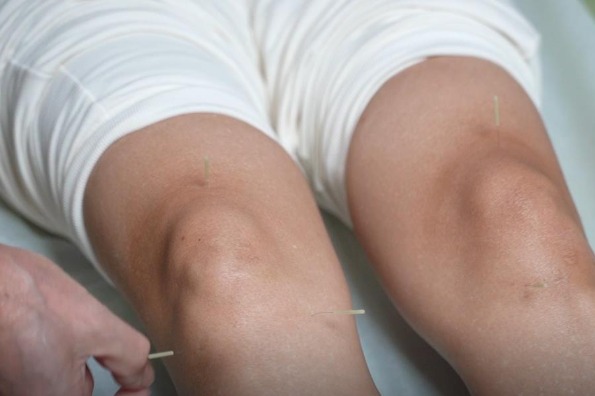Accepted across the planet


When I first took my British friend Isaebella Watson, 24, to an acupuncture clinic in Beijing, she was horrified when needles pierced her soft skin. She froze, and refused to move initially, fearing that a small change in posture could trigger a sharp pain. Later, however, she was amazed by the magical therapeutic effect.
Last month, Watson, who studies communication at a Beijing university, was on a long-haul flight from London to Beijing. She slept through the journey, only to find later she could not move her right arm and fingers.
"I felt no pain, and there was no bruise and scar. Instead, my arm just simply didn't follow my brain's instructions to move, as if it no longer belonged to my body. I went to a Western hospital. I took the prescribed medicine, but my situation didn't improve," Watson recalled.
Cut to the acupuncture clinic. I can still recall the painful look on her face. Lying on the clinic bed, she closed her eyes firmly as dozens of tiny needles were inserted across her arms and fingers.
"I tried to stay very still because I was afraid that even a small move would make the long needle heads rip through my muscles. I spent many long hours counting the clock, waiting for the moment when the doctor would remove the needles."
After a couple of days, she could move her fingers. Two weeks later, she could eat a meal with chopsticks. Within a month, her arms and fingers recovered almost fully.
"Oh my god. Chinese acupuncture is amazing! I used to dismiss acupuncture as an old-fashioned pseudoscience. The treatment is long, the process is painful, and after all, the recovery speed is so slow! However, the miracle of my recent treatment and recovery totally changed my mind," said Watson.
Now, she is a big fan of traditional Chinese medicine. She bought TCM books to learn about TCM systematically. She attended TCM lectures. She even administers to herself moxibustion treatment at home when she experiences any body discomfort.
Watson's story finds echo in a recent report from the State Council Information Office. According to the report, acupuncture is now widely accepted across the world as a healthy treatment.
The practice dates back to the sixth century. Acupuncture spread to Japan and North Korea first, and to Europe in the 16th century. In November 1996, the World Health Organization recommended acupuncture to alleviate symptoms of 64 diseases. There are over 380,000 acupuncture professionals worldwide, and patients who received TCM treatment account for over one-third of the world population. Outside China, there are more than 100,000 Chinese acupuncture institutions, said the report.
The Belt and Road Initiative further promoted acupuncture globally. In 2014, the World Federation of Acupuncture-Moxibustion Societies promoted acupuncture in BRI economies, aiming to boost academic exchanges between acupuncture and other traditional treatments, and offering local people a better understanding of the practice.
"Acupuncture adjusts human body from an abnormal status to a healthy status. It also eases pain by making the blood in the meridians run smoothly. In addition, research showed that acupuncture has preventive effects by raising the immunity of human body. This is why acupuncture became popular overseas," said He Ling, an acupuncture professional at Zhenaiguangyuyuan, a renowned acupuncture hospital in Xi'an, Shaanxi province.
Liu Baoyan, president of the China Association of Acupuncture-Moxibustion, said: "Clinical research, talent, professional bodies and authentic data are needed to support the safe usage and global development of TCM."
Related stories
- A healthy way of nursing the world
- Regulators warn against weakening of TCM hospitals in forming consortia of healthcare institutions
- Improper TCM mixture led to adverse reactions in some children
- China vows to double people's accessibility to TCM services
- TCM expo in Gansu to explore setting industry's national standards




